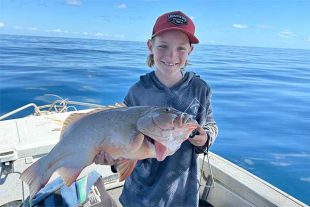
Moving up and down our inland river systems is essential for golden perch (aka yellowbelly), but with more than 10,000 barriers to fish passage across the Murray-Darling Basin in NSW, it’s often easier said than done. rock ladders for golden perch
Our native fish experience a highway littered with permanent road blocks and speed bumps as they try to make their way along the rivers of the Murray-Darling Basin.rock ladders golden perch
rock ladders golden perch
Native fish such as golden perch have to be able to move freely within our waterways so that they can feed, breed and find new homes. However, the most important journey the species undertakes is during spawning migrations. These extensive trips are usually taken during the spring and summer months when the water is warmer than 20°C. During this time individual golden perch can move thousands of kilometres upstream with one fish recorded as making a massive journey from South Australia to Queensland, travelling more 2000 km in three months, a rare event only possible during extreme flood events.
rock ladders golden perch
rock ladders golden perch
Female golden perch can lay up to 500,000 semi-buoyant eggs that hatch into 3.5 mm larvae after 1-2 days. The larvae drift downstream before being able to actively swim and find food after five days. So free passage for the Golden Perch is critical, both over small and large scales. However, with thousands of barriers to fish passage such as weirs and road crossings across the Basin, it’s more a case of “road blocks” than “open highway” for our native fish.
rock ladders golden perch
For most golden perch, their only natural chance of help past these barriers is a flood that overtops the weir wall, however, large floods are becoming increasingly rare in our systems. So how can we help golden perch and their fishy friends travel unimpeded along their own “Golden Highway”? In the case of larger barriers, fishways are needed to help fish pass. These impressive pieces of infrastructure act like a ladder, helping fish move both upstream and downstream of weirs and dams through a series of pools and steps.
rock ladders golden perch
In NSW waters, fish now have unimpeded access to more than 2000 km of waterways. More works are planned for the future to open up our waterways and create the ultimate fish freeway. It’s Biodiversity Month and NSW DPI plays a part in protecting our State’s biodiversity through research, protection & breeding of native fish. https://www.facebook.com/NSWDPIFisheries
 Bush ‘n Beach Fishing Magazine Location reports & tips for fishing, boating, camping, kayaking, 4WDing in Queensland and Northern NSW
Bush ‘n Beach Fishing Magazine Location reports & tips for fishing, boating, camping, kayaking, 4WDing in Queensland and Northern NSW









